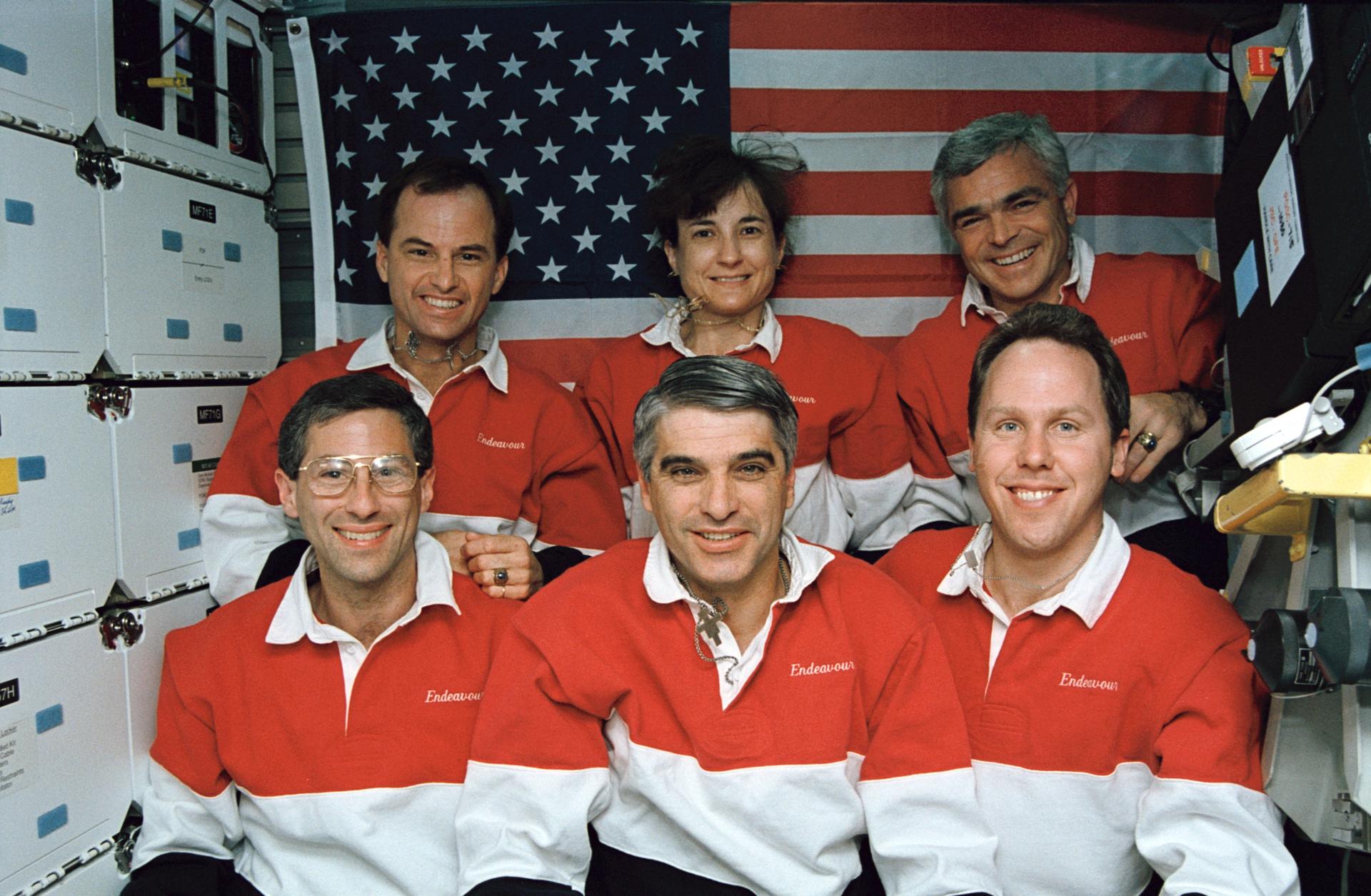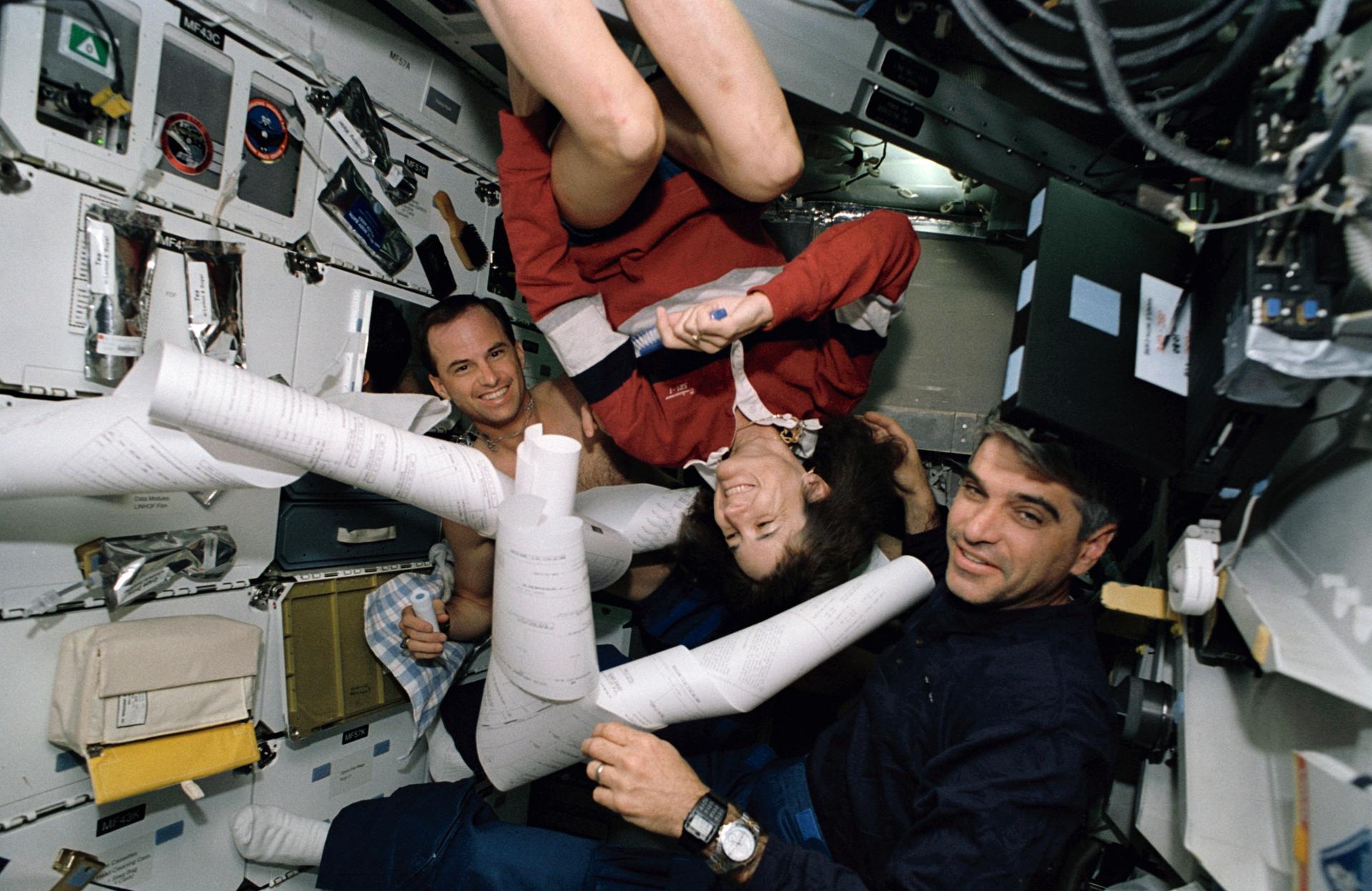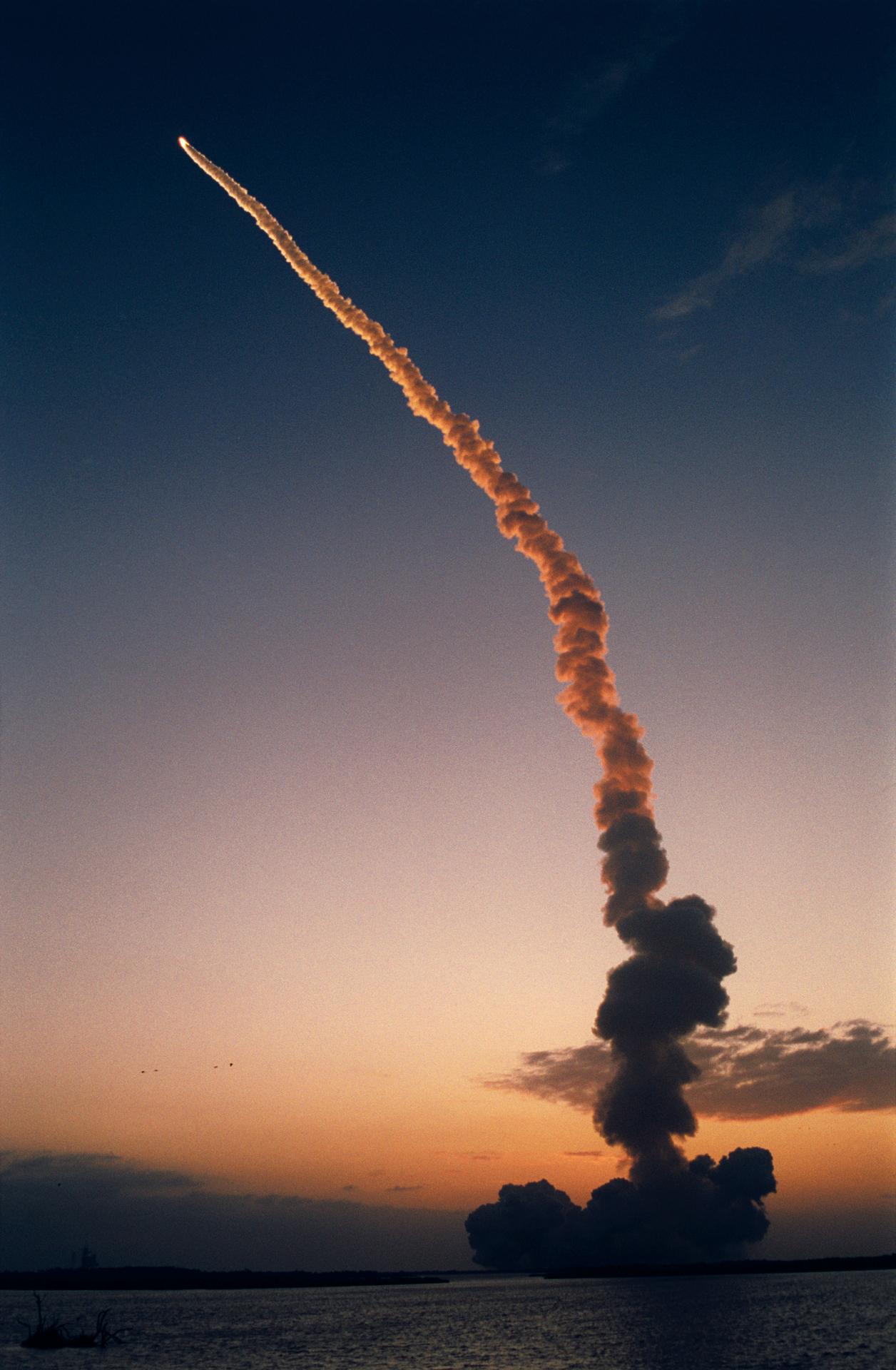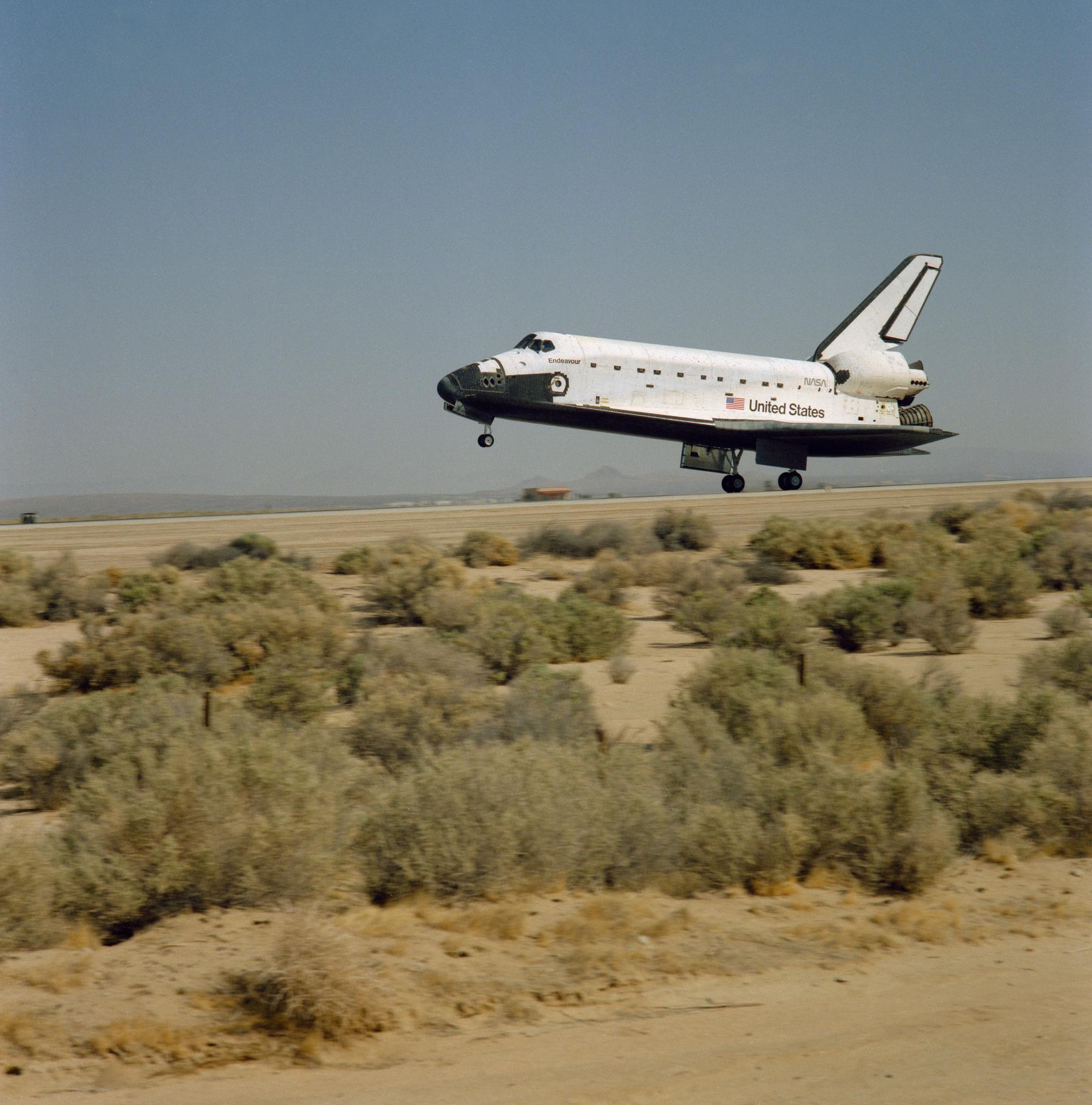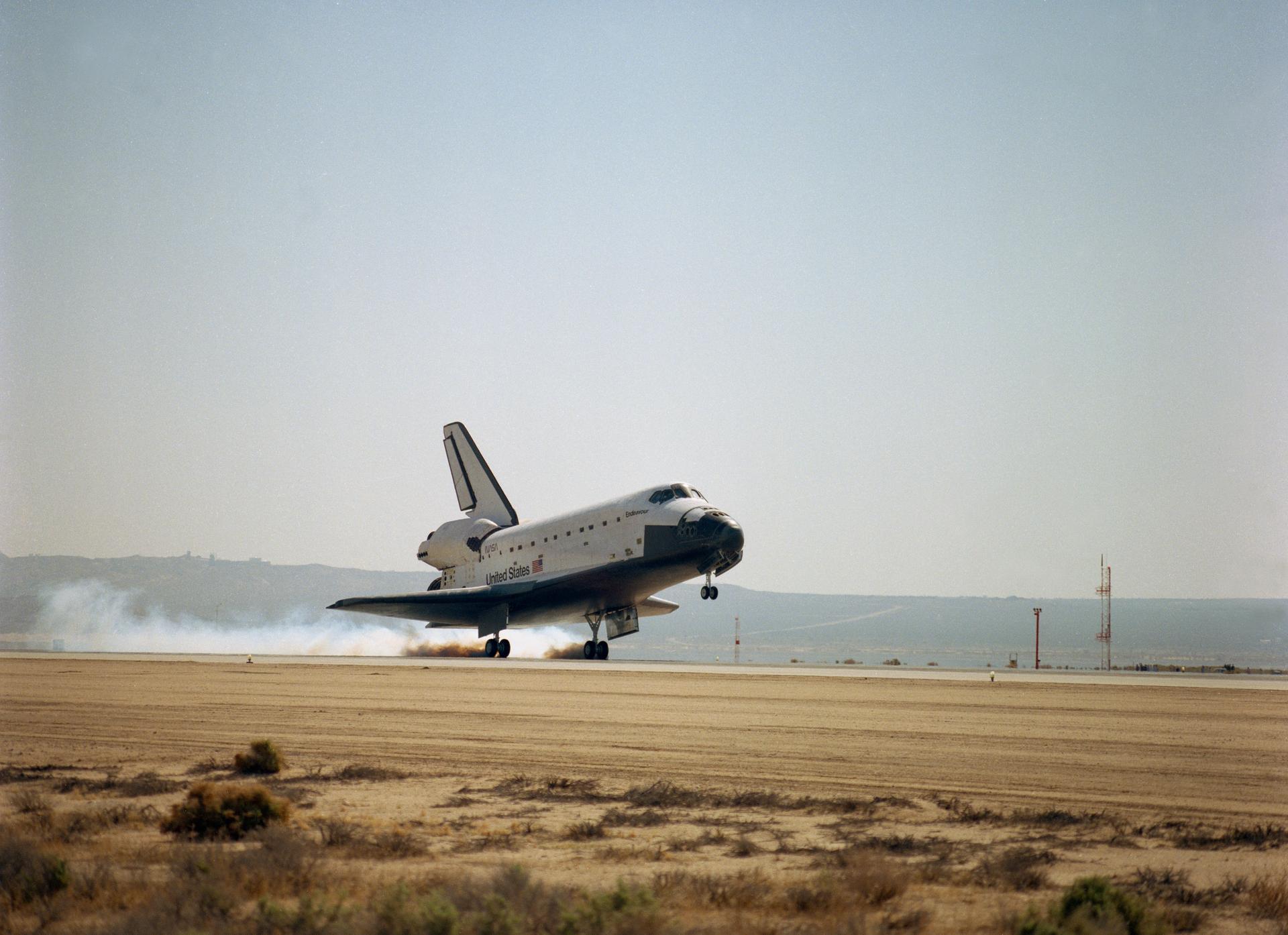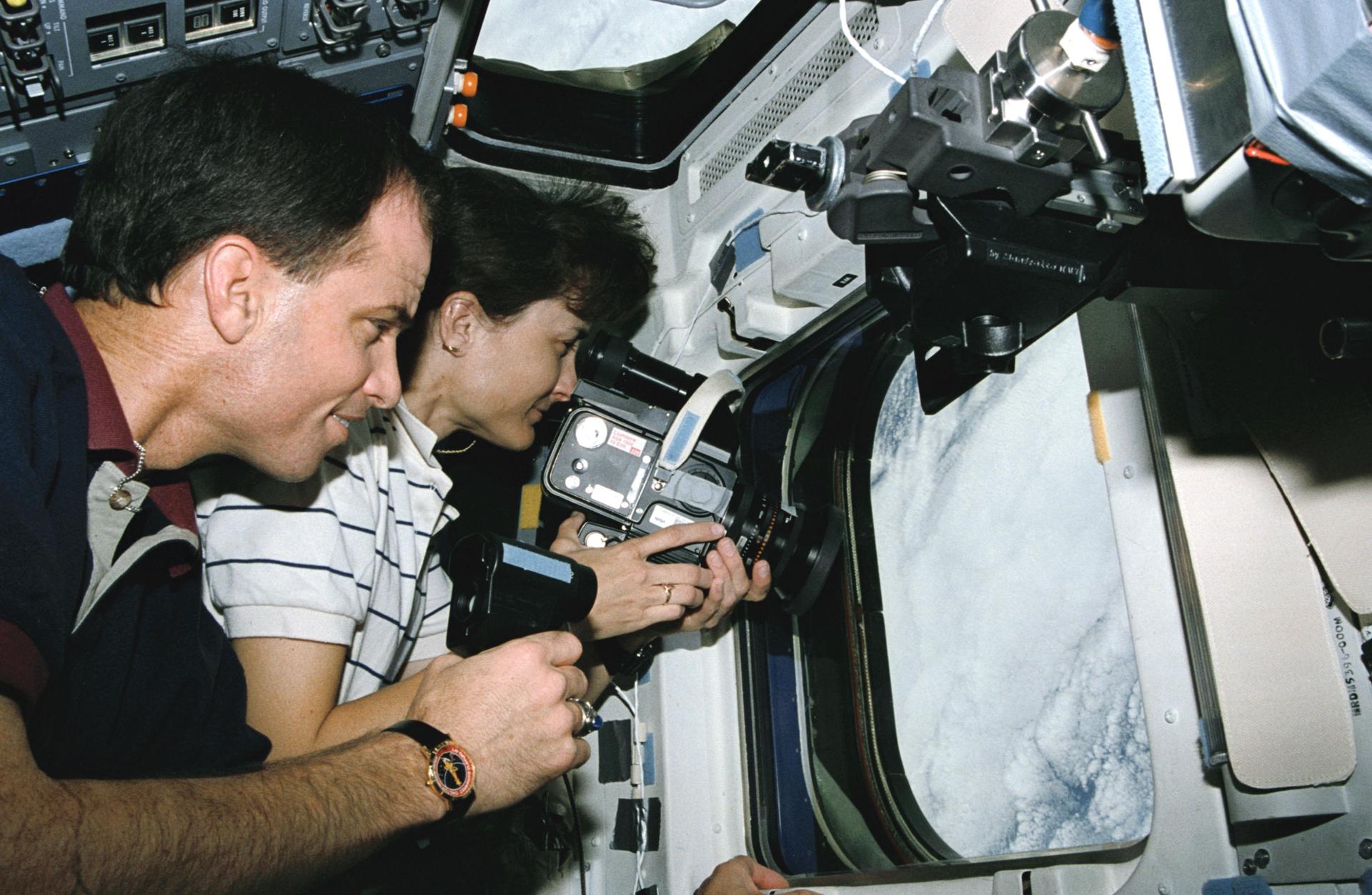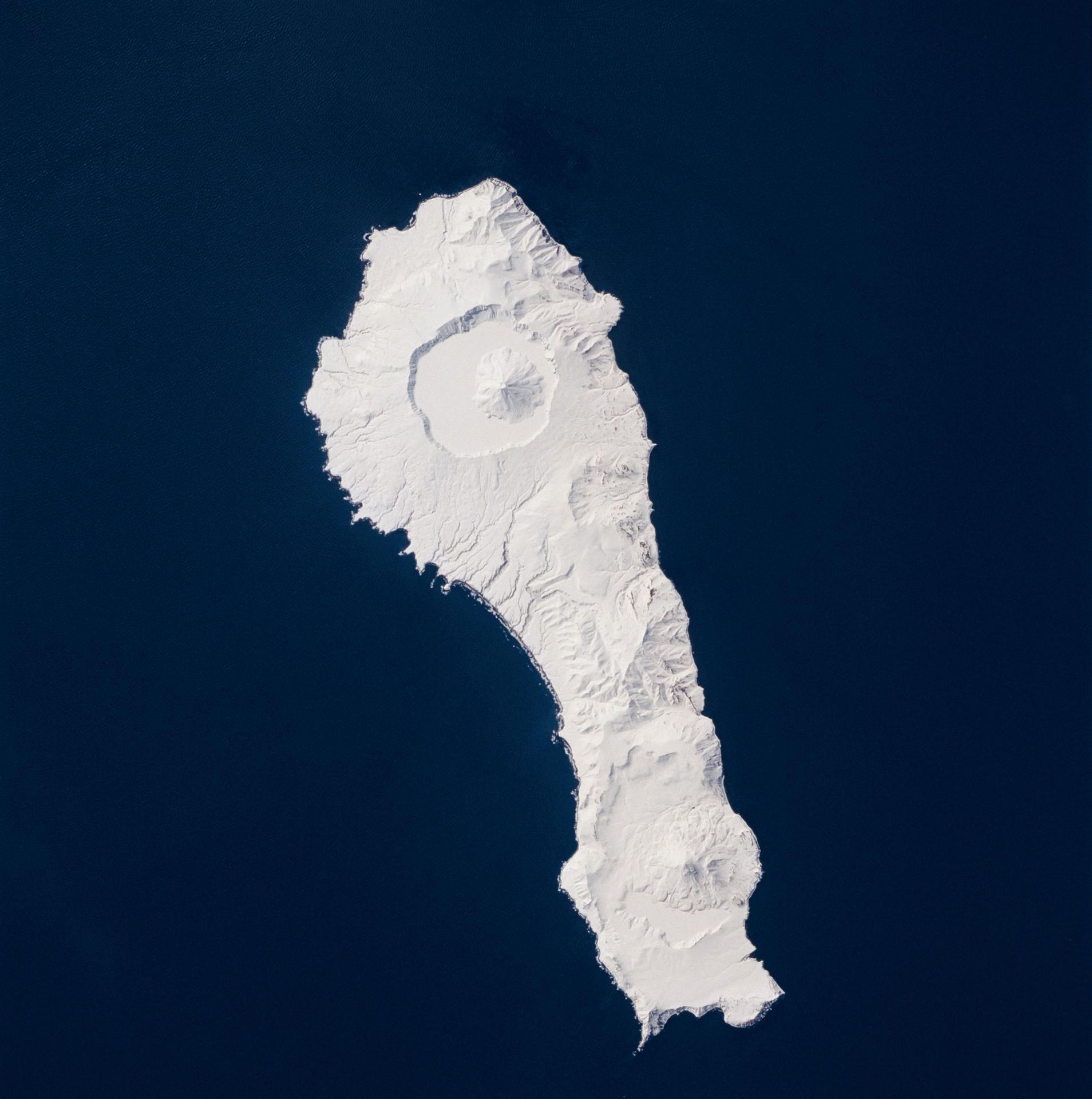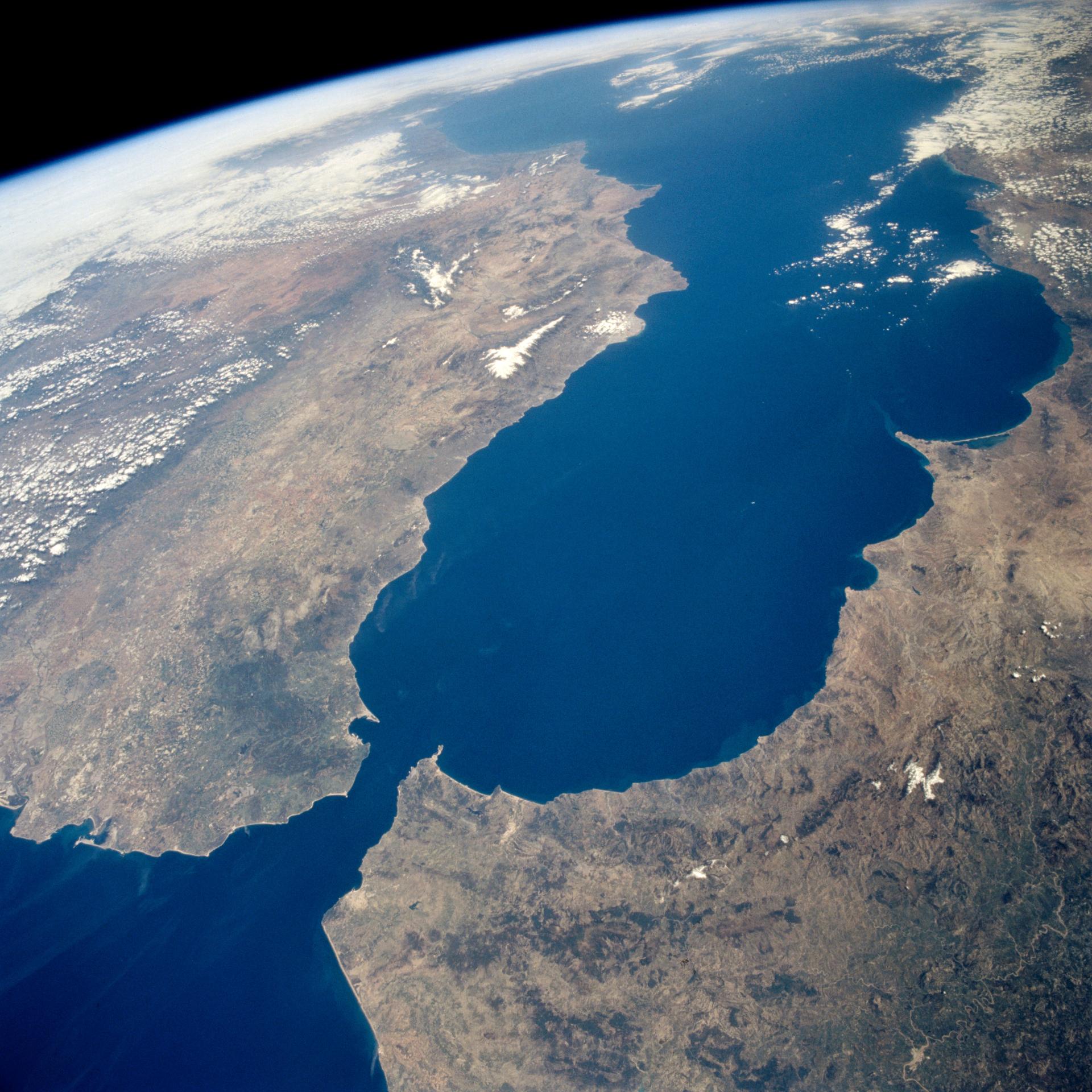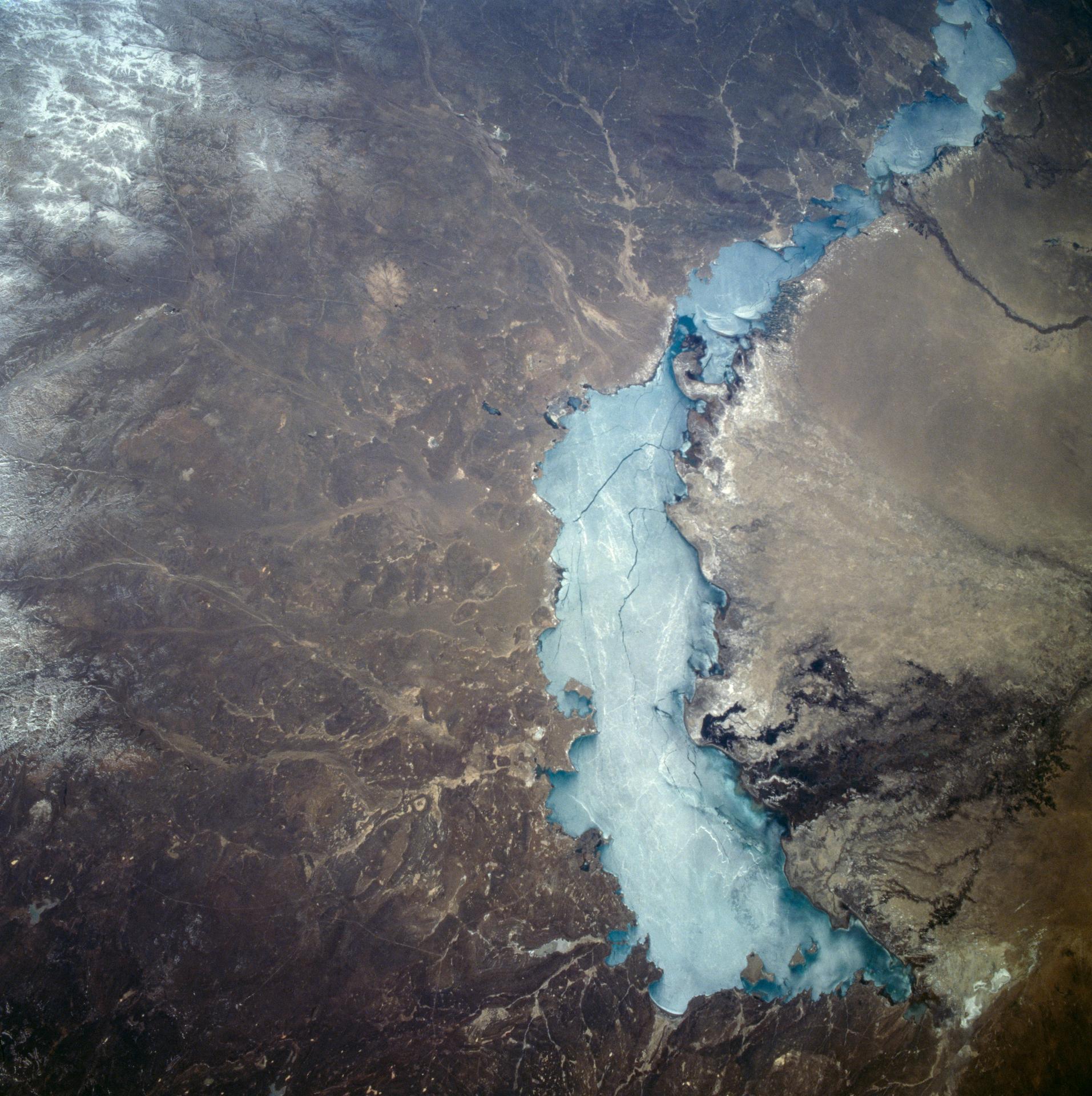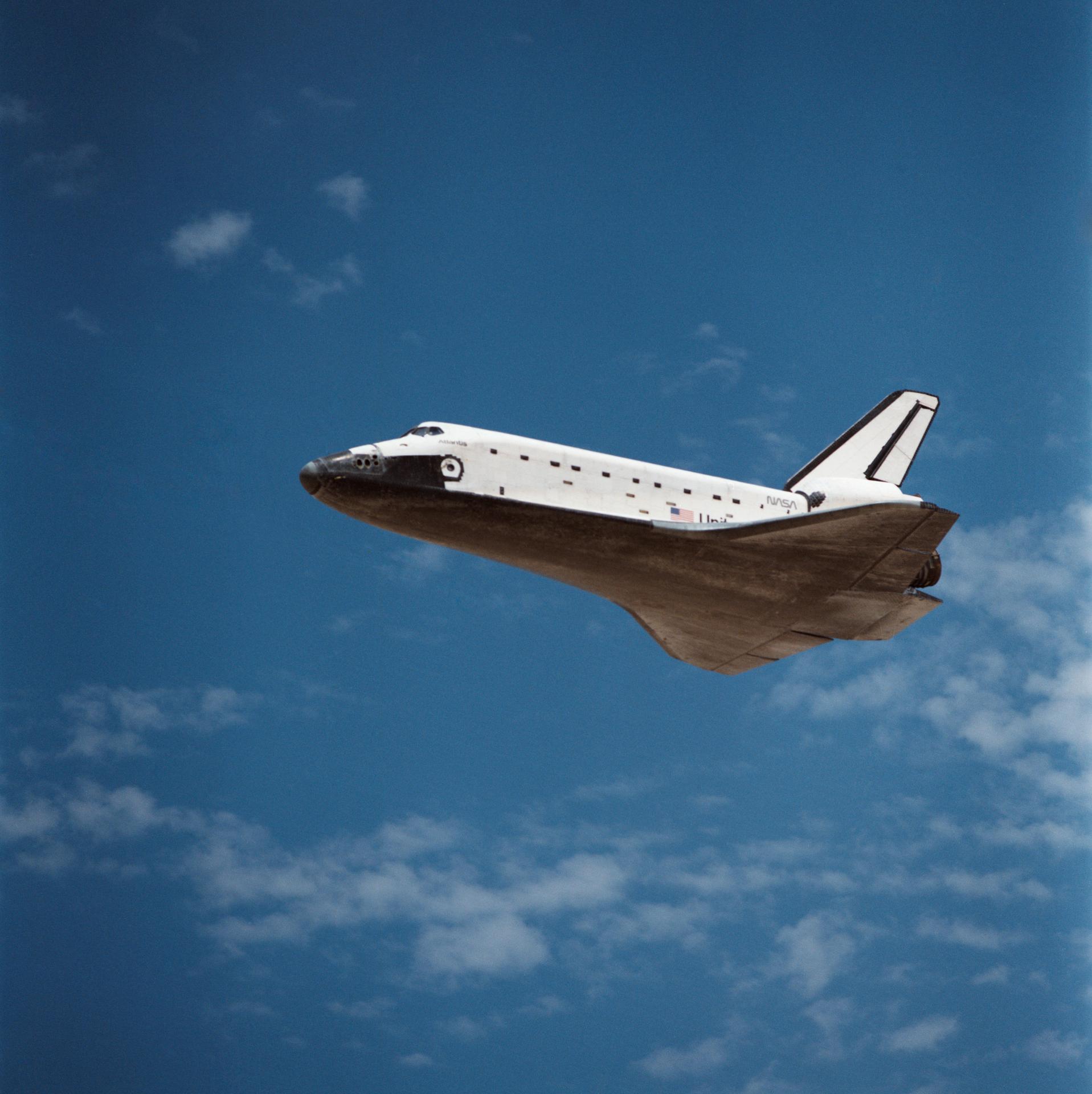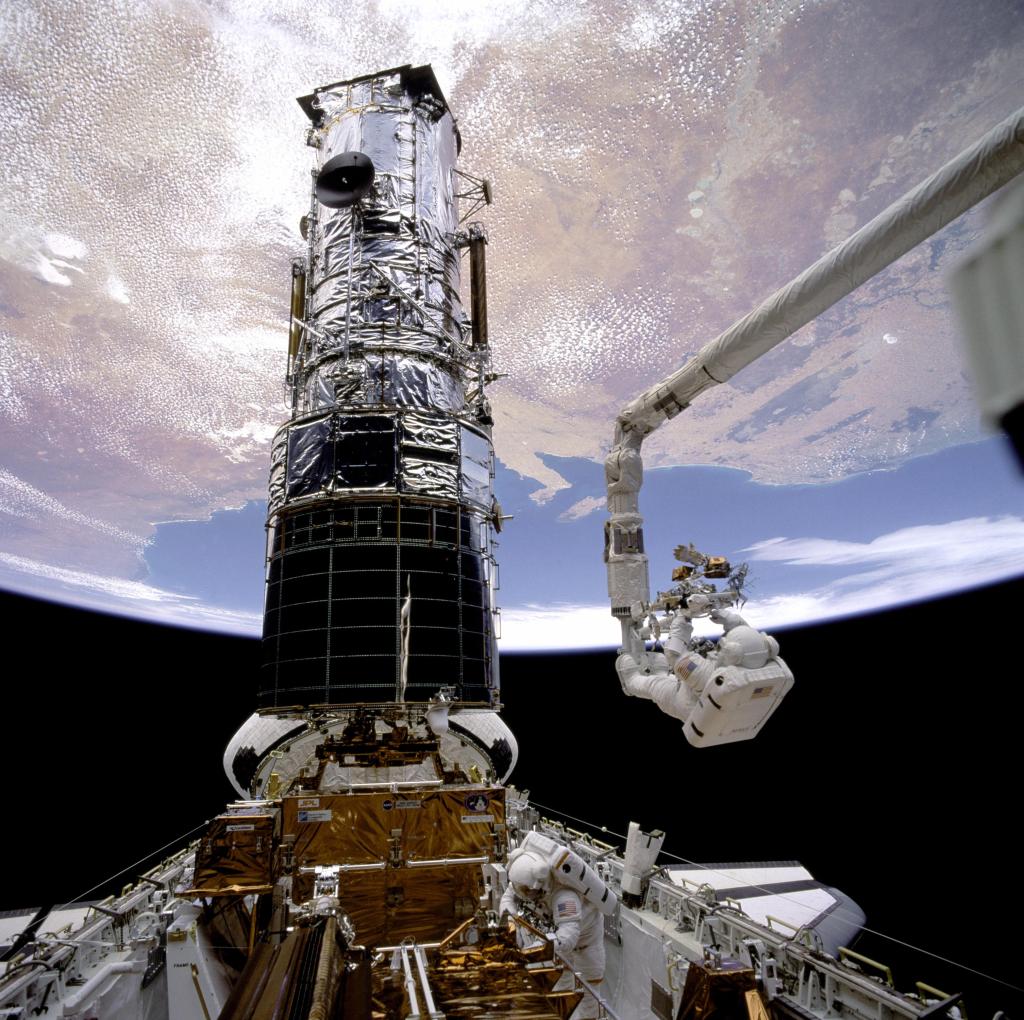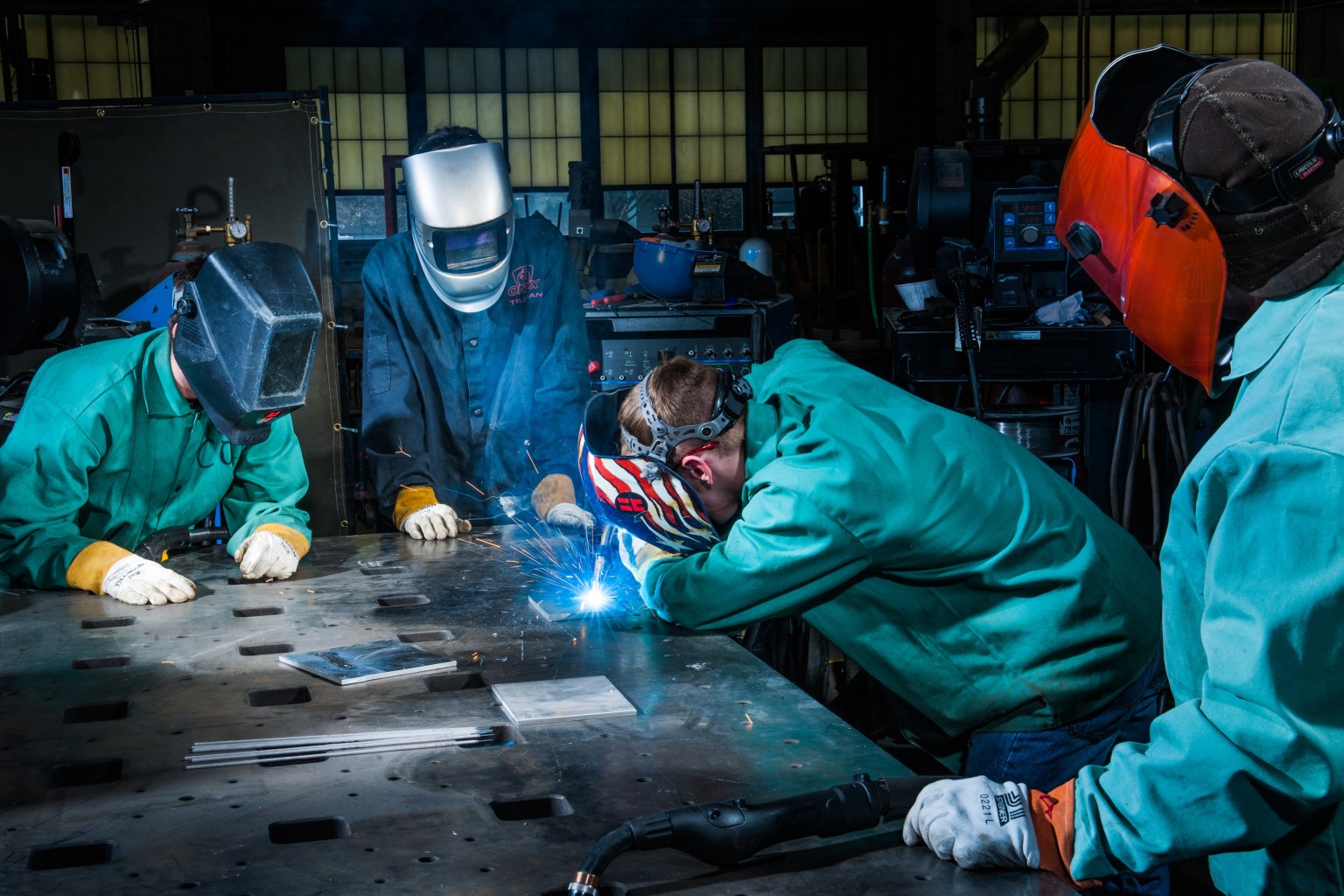
STS-59
Deployment of the Space Radar Laboratory (SLR-1)
orbiter
mission duration
Launch
Landing
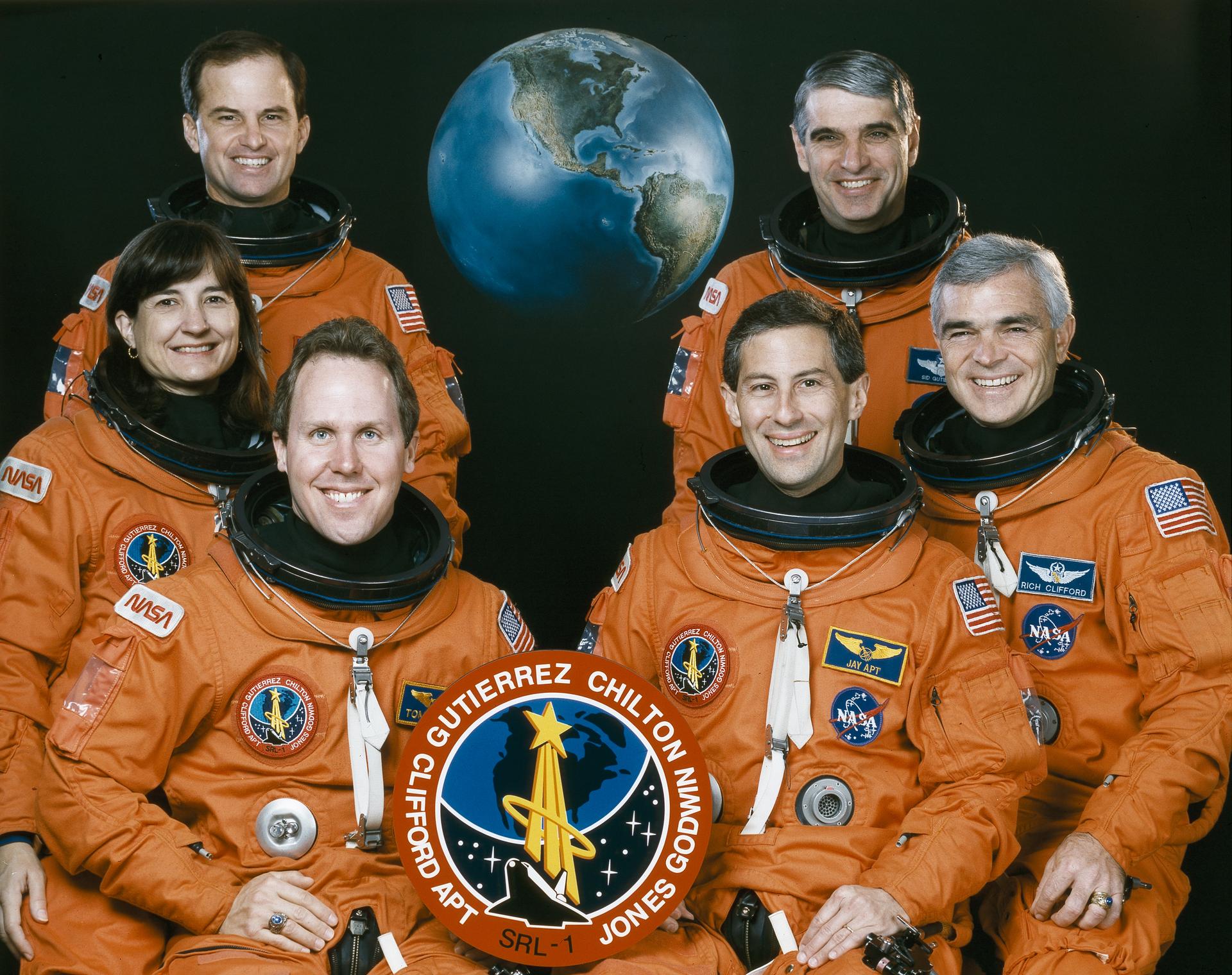
STS-59 Mission Facts
Mission: Space Radar Laboratory (SRL-1)
Space Shuttle: Endeavour
Launch Pad: 39A
Launched: April 9, 1994 at 7:05 a.m. EDT
Landing Site: Edwards Air Force Base, Calif.
Landing: April 20, 1994, 9:54:30 a.m. PDT
Runway: 22
Rollout Distance: 10,691 feet
Rollout Time: 54 seconds
Revolution: 183
Mission Duration: 11 days, 5 hours, 49 minutes, 30 seconds
Returned to KSC: May 2, 1994
Orbit Altitude: 121 nautical miles
Orbit Inclination: 57 degrees
Miles Traveled: 4.7 million
Crew
Sidney M. Gutierrez, Commander
Kevin P. Chilton, Pilot
Linda M. Godwin, Payload Commander
Jay Apt, Mission Specialist
Michael R. Clifford, Mission Specialist
Thomas D. Jones, Mission Specialist
Launch Highlights
Launch originally set for April 7 was postponed at the T-27 hour mark for one day to allow for additional inspections of metallic vanes in the space shuttle main engine (SSME) high pressure oxidizer preburner pumps. Launch on April 8 scrubbed due to weather, high crosswinds and low clouds at Shuttle Landing Facility (SLF) and clouds at launch pad. Countdown April 9 proceeded smoothly.
Mission Highlights
Primary payload was the Space Radar Laboratory (SRL-1), located in payload bay; activated by crew and operated by teams on ground. SRL-1 included the Spaceborne Imaging Radar-C and the X-band Synthetic Aperture Radar (SIR-C/X-SAR) and an atmospheric instrument called Measurement of Air Pollution from Satellites (MAPS). The German Space Agency (DARA) and the Italian Space Agency (ASI) provided the X-SAR instrument. SIR-C/X-SAR covered approximately 38.5 million miles of the Earth, the equivalent of 20 percent of the planet. More than 400 sites were imaged, including 19 primary observation sites (supersites) in Brazil, Michigan, North Carolina and Central Europe. Thirteen countries were represented in the project with 49 principal investigators and more than 100 scientists, coordinated by the Jet Propulsion Laboratory (JPL). Some 133 hours of data were collected. The MAPS experiment measured the global distribution of carbon monoxide in the troposphere, or lower atmosphere.
Get-Away Special (GAS) experiments were sponsored by New Mexico State University, Matra Marconi Space (France), and the Society of Japanese Aerospace Companies.
Consortium for Materials Development in Space Complex Autonomous Payload-IV (CONCAP IV), carried in GAS hardware in the payload bay, was developed by the University of Alabama-Huntsville. It produced crystals and thin films through physical vapor transportation.
Middeck experiments included Visual Function Tester-4 (VFT-4), Space Tissue Loss-4 and -5; and Shuttle Amateur Radio Experiment (SAREX).
Mission also marked first flight of Toughened Uni-Piece Fibrous Insulation, known as TUFI, an improved thermal protection tile. Several test tiles were placed on orbiter’s base heat shield between three main engines.
STS-59
Shuttle News
Retired Space Shuttle Locations
Shuttle Atlantis – Kennedy Space Center Visitor Complex Shuttle Discovery – Steven F. Udvar-Hazy Center Shuttle Endeavour – California Science…
Read the Story



























